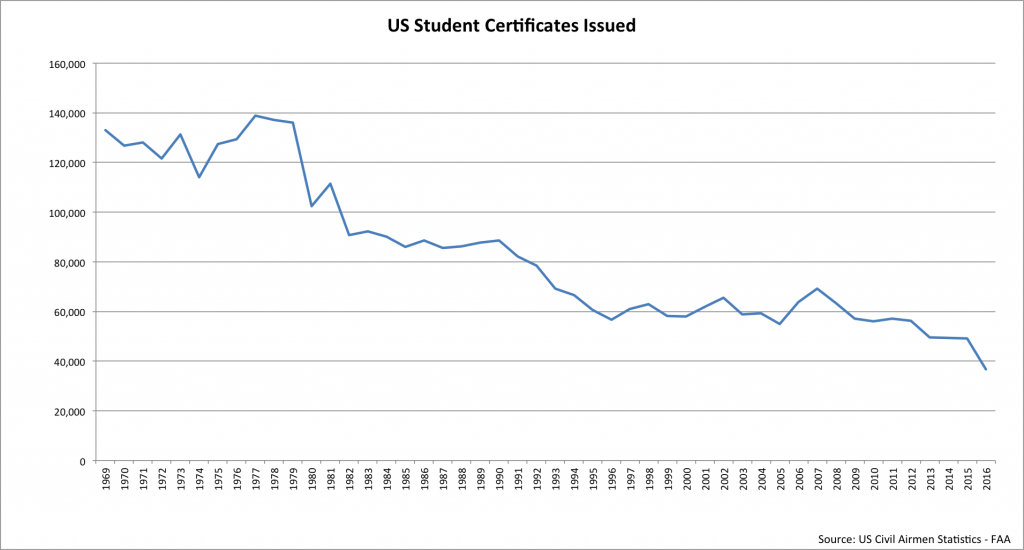Last month, the FAA’s Air Carrier Training Aviation Rulemaking Committee (ACT ARC) issued its recommendations to provide an alternative pathway to the famous “1,500-hour rule.”
This doesn’t solve the entire pilot shortage issue, but it’s the biggest development in many years that goes a long way to help the situation.
A shortage of pilots is a real threat to the airline industry and it’s already an issue in some world regions. Despite the US carriers being the most vocal, Chinese, European and Asian airlines are also working hard to staff their cockpits.
ICAO predicts a need for around 500,000 new pilots in the next 15 years. That’s roughly 20% more than the current capacity to train them. On top of that, an ever-shrinking number of students are willing to take classes to become a pilot. According to the US Federal Aviation Administration, the number of pilot certificates issued to students shrunk an average of 2.7% annually over the last 5 decades.

The shortage has already caused airlines to cancel hundreds of flights this year. Some communities lost air service completely which forced passengers to travel further just to get to a functioning airport.
The Committee’s proposed modification would allow new hires to obtain a certificate with restricted privileges after completing an Enhanced Qualification Program (EQP). With a predefined curriculum, the program would be executed mostly by regional airlines with help from the FAA.
In short, this new way of thinking equates hours in classrooms and simulators with experience operating an aircraft by accumulating “credits” to reduce the total number of required flight hours.
Two credit accounting methods were proposed:
1. 250 academic hours credited for every candidate that completes the EQP, effectively reducing the required flight hours by the same amount;
2. 750 academic hours credited to candidates that complete the EQP, effectively reducing the required flight hours by 250 flight hours for candidates with a military background, 500 flight hours for candidates with a four-year bachelor degree, and 750 flight hours for candidates with two-year bachelor degree.


Airlines are also developing other alternatives to reduce the issue. Some are working to attract new pilots at a much earlier age, even as early as high school. JetBlue Airways, for example, has set up its own program by offering internships for aspiring commercial pilots while students are at university. United Airlines is linking up with flight training schools and developing career path programs so that students have a job upon graduation.
Carriers are also offering generous signing bonuses, raising pay scales and improving benefits. One way to attract more pilots is to shorten the time to progress through training and to accumulate qualifying hours. That time savings translates into cost savings for a new recruit and up to two years more time earning a career salary. That’s a significant incentive.
There are encouraging signs that these initiatives are working, particularly in the USA. Airlines there are getting back on track to meet their future staff levels. I’m optimistic that we, as an industry, will find new ways to bring a whole new generation of pilots into the cockpits of our airplanes.

Flying is a fantastic career. If you’re considering a future in the skies, the airline industry offers tremendous opportunity and job security for pilots, especially with such robust growth in air travel projected over the next twenty years.

